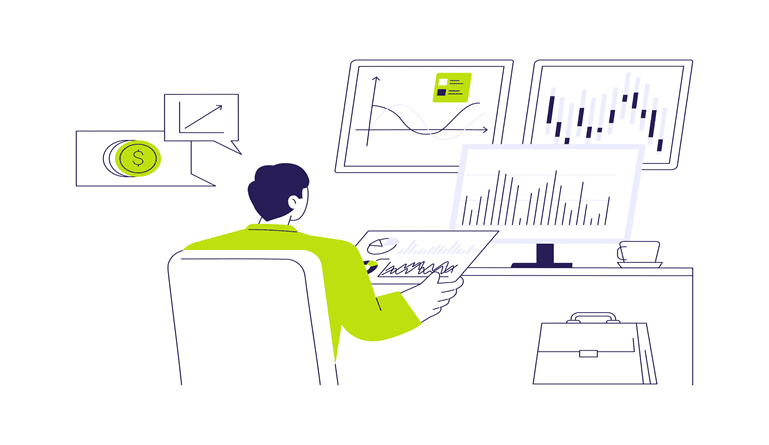Cybersecurity in the Fintech-Martech Landscape
In today’s rapidly evolving digital landscape, the convergence of Financial Technology (Fintech) and Marketing Technology (Martech) is creating unprecedented opportunities for businesses. This integration is revolutionizing how financial services are delivered and marketed to consumers. However, with these new opportunities come significant challenges, particularly in the realm of cybersecurity.
The intersection of Fintech and Martech involves handling vast amounts of sensitive financial data and valuable marketing analytics. This combination of information is a treasure trove for cybercriminals, making robust cybersecurity measures more critical than ever. As these industries continue to intertwine, protecting the integrity, confidentiality, and availability of data has become paramount for maintaining consumer trust and ensuring regulatory compliance.
The Rise of Fintech-Martech Integration
The integration of Fintech and Martech is reshaping both industries in profound ways. Fintech companies are leveraging marketing technologies to better understand and target their customers, while Martech firms are incorporating financial data to enhance their analytics and personalization capabilities. This synergy is creating more efficient, personalized, and data-driven financial services.
However, this integration also means that both sectors now share a common digital infrastructure, relying heavily on cloud computing, big data analytics, and artificial intelligence. While these technologies drive innovation, they also expand the attack surface for cybercriminals. The interconnected nature of these systems means that a breach in one area can have far-reaching consequences across both domains.
As a result, new cybersecurity threats are emerging that specifically target the vulnerabilities created by this integration. These threats are becoming increasingly sophisticated, exploiting the complex interplay between financial transactions and marketing data.
Emerging Cybersecurity Threats in the Fintech-Martech Landscape
The Fintech-Martech landscape faces a variety of evolving cybersecurity threats:
-
Ransomware Attacks
Cybercriminals are targeting financial institutions and marketing agencies with ransomware, encrypting critical data and demanding payment for its release. These attacks can cripple operations and lead to significant financial losses.
-
Advanced Phishing Schemes
Sophisticated phishing attacks are leveraging marketing data to create highly personalized and convincing fraudulent communications, tricking users into revealing sensitive financial information.
-
AI-Powered Attacks
Hackers are using artificial intelligence to automate and scale their attacks, making them more difficult to detect and prevent.
-
API Vulnerabilities
As Fintech and Martech platforms increasingly rely on APIs for integration, poorly secured APIs become prime targets for attackers seeking to gain unauthorized access to systems.
-
Social Engineering
Cybercriminals are exploiting the human element by manipulating employees into revealing confidential information or granting system access.
These threats are constantly evolving, requiring organizations to stay vigilant and continuously update their cybersecurity strategies.
Data Breaches and Security Vulnerabilities
Data breaches pose significant risks to both Fintech and Martech companies, potentially exposing sensitive financial information and valuable customer data. Common vulnerabilities that hackers exploit include:
-
Weak Authentication
Inadequate password policies or lack of multi-factor authentication can leave systems vulnerable to unauthorized access.
-
Insufficient Encryption
Failure to properly encrypt data at rest and in transit can expose sensitive information to interception and theft.
-
Outdated Software
Neglecting to update software and systems with the latest security patches leaves known vulnerabilities open to exploitation.
-
Insider Threats
Employees with access to sensitive data can intentionally or unintentionally compromise security.
Real-world examples of data breaches in this sector have had severe consequences. For instance, the 2019 Capital One breach exposed the personal information of over 100 million customers, highlighting the potential scale of such incidents. Similarly, the 2018 Facebook-Cambridge Analytica scandal demonstrated how marketing data could be misused, eroding consumer trust and leading to regulatory scrutiny.
Regulatory Compliance Challenges
The Fintech-Martech landscape is subject to a complex web of regulations designed to protect consumer data and ensure financial stability. Key regulations include:
-
General Data Protection Regulation (GDPR)
This EU regulation sets strict requirements for data protection and privacy.
-
California Consumer Privacy Act (CCPA)
Similar to GDPR, this law gives California residents more control over their personal data.
-
Payment Card Industry Data Security Standard (PCI DSS)
This standard ensures that companies handling credit card information maintain a secure environment.
-
Financial Industry Regulatory Authority (FINRA) Rules
These regulations govern the activities of broker-dealers in the United States.
Compliance with these regulations while also defending against cyber threats presents significant challenges. Companies must implement robust security measures while ensuring transparency in data handling practices. Failure to comply can result in hefty fines and reputational damage.
Organizations must strike a balance between innovation and compliance, ensuring that new technologies and integrations meet regulatory standards without compromising security.
The Role of AI and Machine Learning in Cybersecurity
Artificial Intelligence (AI) and Machine Learning (ML) are playing an increasingly important role in cybersecurity for the Fintech-Martech sector:
-
Threat Detection
AI algorithms can analyze vast amounts of data to identify potential security threats in real-time, often detecting subtle patterns that human analysts might miss.
-
Behavioral Analysis
ML models can establish baseline user behaviors, flagging anomalies that may indicate a security breach or fraudulent activity.
-
Automated Response Systems
AI-powered systems can automatically respond to certain types of attacks, containing threats before they can spread.
-
Predictive Analytics
These technologies can forecast potential vulnerabilities and attack vectors, allowing organizations to proactively strengthen their defenses.
While AI and ML offer powerful tools for cybersecurity, they also have limitations. These systems can produce false positives and may be vulnerable to adversarial attacks designed to mislead them. Therefore, human oversight and continuous refinement of these systems remain crucial.
(Also Read: Role of Cybersecurity in an Organization)
Technological Vulnerabilities in Fintech-Martech Systems
Specific technological vulnerabilities within Fintech-Martech platforms include:
-
API Security Flaws
Poorly secured APIs can provide unauthorized access to sensitive data or systems.
-
Cloud Storage Risks
Misconfigured cloud storage settings can lead to data exposure.
-
Legacy System Integration
Older systems may lack modern security features, creating weak points when integrated with newer technologies.
-
Mobile App Vulnerabilities
As more financial and marketing activities move to mobile platforms, securing these apps becomes crucial.
To mitigate these risks, companies should:
- Implement robust API authentication and authorization mechanisms
- Regularly audit cloud configurations and access controls
- Gradually phase out legacy systems or isolate them from critical operations
- Conduct thorough security testing for mobile applications
Best Practices for Data Protection and Encryption
Protecting sensitive data is crucial in the Fintech-Martech landscape. Best practices include:
-
Encryption
Use strong encryption algorithms for data at rest and in transit. Implement end-to-end encryption for sensitive communications.
-
Data Classification
Categorize data based on sensitivity to apply appropriate protection measures.
-
Access Control
Implement the principle of least privilege, granting users only the access they need to perform their roles.
-
Regular Audits
Conduct frequent audits of data access and usage to detect and prevent unauthorized activities.
-
Secure Data Disposal
Implement policies for securely disposing of data when it’s no longer needed.
Encryption standards like AES (Advanced Encryption Standard) for data at rest and TLS (Transport Layer Security) for data in transit are widely used in the industry. These standards provide robust protection against unauthorized access and interception of data.
Robust Authentication Mechanisms
Strong authentication is essential to prevent unauthorized access to systems and data. Key authentication methods include:
-
Multi-Factor Authentication (MFA)
Requires users to provide two or more verification factors to gain access to a resource.
-
Biometric Verification
Uses unique physical characteristics like fingerprints or facial recognition for authentication.
-
Token-Based Systems
Employ hardware or software tokens that generate one-time passwords for access.
-
Risk-Based Authentication
Adjusts authentication requirements based on the perceived risk of the access attempt.
Implementing these methods significantly enhances security in Fintech and Martech operations by adding layers of verification beyond simple passwords.
Employee Training and Awareness
Employees can be both the strongest defense and the weakest link in an organization’s cybersecurity. Comprehensive training programs should cover:
-
Recognizing Phishing Attempts
Train employees to identify and report suspicious emails or messages.
-
Safe Internet Practices
Educate staff on safe browsing habits and the risks of using unsecured networks.
-
Data Handling Procedures
Ensure employees understand proper protocols for handling sensitive information.
-
Incident Reporting
Establish clear procedures for reporting potential security incidents.
-
Regular Updates
Conduct ongoing training to keep employees informed about new threats and best practices.
By fostering a culture of security awareness, organizations can significantly reduce the risk of human error leading to security breaches.
The Importance of Third-Party Risk Management
In the interconnected Fintech-Martech ecosystem, third-party vendors and partners can introduce significant security risks. To manage these risks:
- Conduct thorough due diligence before engaging with new vendors.
- Include security requirements in contracts with third parties.
- Regularly assess the security posture of partners and vendors.
- Implement monitoring systems to detect any unusual activities from third-party connections.
- Develop incident response plans that include procedures for addressing third-party-related security incidents.
By carefully managing third-party risks, organizations can maintain a more secure overall ecosystem.
Leveraging Blockchain Technology for Enhanced Security
Blockchain technology offers several security benefits in the Fintech-Martech landscape:
-
Decentralized Architecture
Reduces the risk of single points of failure.
-
Immutable Transaction Records
Provides a tamper-resistant audit trail.
-
Smart Contracts
Automate and secure the execution of agreements.
-
Enhanced Data Integrity
Ensures the authenticity and consistency of data across the network.
Companies like JP Morgan Chase have implemented blockchain for secure, efficient inter-bank transactions, while marketing firms are exploring its use for secure, transparent ad buying processes.
The Future of Cybersecurity in the Fintech-Martech Landscape
Looking ahead, several trends are shaping the future of cybersecurity in this sector:
-
Quantum Computing
While offering potential for enhanced encryption, it also poses threats to current cryptographic methods.
-
Edge Computing
As more processing moves to the edge, new security paradigms will be needed.
-
5G Networks
Faster, more connected systems will require new approaches to security.
-
IoT Integration
The proliferation of IoT devices in finance and marketing will expand the attack surface.
Organizations must stay informed about these developments and prepare strategies to address emerging threats and leverage new security technologies.
Case Studies: Successful Cybersecurity Implementations in Fintech and Martech
-
Case Study 1: TransferWise (now Wise)
TransferWise, a leading international money transfer service, implemented a multi-layered security approach:
- Utilized machine learning algorithms to detect and prevent fraudulent transactions in real time.
- Implemented strict access controls and encryption for all customer data.
- Conducted regular penetration testing and bug bounty programs to identify and address vulnerabilities.
Result: Successfully prevented numerous fraud attempts and maintained a strong reputation for security in a highly sensitive financial domain.
-
Case Study 2: HubSpot
HubSpot, a prominent marketing and sales platform, enhanced its security measures:
- Implemented a zero-trust security model across its infrastructure.
- Developed an advanced threat detection system using AI to monitor user behavior.
- Provided comprehensive security training to all employees and made it a core part of the company culture.
Result: Significantly reduced the risk of data breaches and strengthened customer confidence in their data handling practices.
Integrating Cybersecurity with Business Strategy
Integrating cybersecurity into the overall business strategy is crucial for long-term success in the Fintech-Martech landscape. This integration involves:
-
Board-Level Involvement
Ensuring cybersecurity is discussed and prioritized at the highest levels of the organization.
-
Alignment with Business Goals
Designing security measures that support and enable business objectives rather than hindering them.
-
Risk-Based Approach
Allocating security resources based on a comprehensive assessment of business risks.
-
Competitive Advantage
Positioning strong cybersecurity as a key differentiator in the market.
-
Customer Trust
Building and maintaining customer confidence through transparent and robust security practices.
Final Thoughts
As the Fintech and Martech sectors continue to converge, the importance of robust cybersecurity measures cannot be overstated. Organizations must adopt a proactive, comprehensive approach to security, leveraging advanced technologies while also addressing the human element through training and awareness.
By staying informed about emerging threats, implementing best practices, and fostering a culture of security, companies in the Fintech-Martech landscape can protect their assets, maintain customer trust, and drive innovation securely. The challenge of cybersecurity in this dynamic environment is ongoing, requiring constant vigilance and adaptation.
By making cybersecurity an integral part of the business strategy, organizations can not only protect themselves against threats but also create opportunities for growth and innovation in a secure environment.








